A Silverstone hall of heroes. And they’re not all drivers
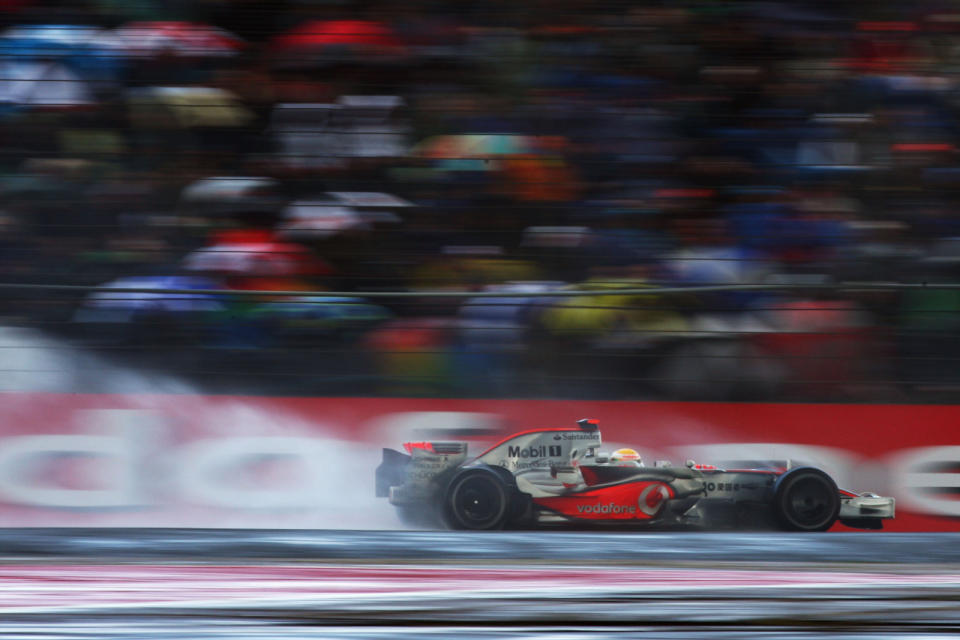
It’s flat, it’s fast and frequently wet. It’s Silverstone and, in 1950, it hosted the first Formula 1 Grand Prix.
Since then, the circuit’s relationship with F1 has ebbed and flowed but it has always been the sport’s spiritual home here in Britain.
And it is a particularly British experience – more than once, I’ve feasted on a damp bacon roll at Silverstone, because I refuse to be both wet and hungry.
On one occasion, I ran out of petrol negotiating traffic around the circuit. On another, I was left listening to the screaming of the old V8s from a nearby lane, beaten by my own tardy timing – it pays to set off early, very early, even on quali day.
There is a sense of ‘place’ about Silverstone that is absent from so many modern F1 tracks but, just as important as the place are the people who help make this such a glorious gathering. If truth be told, most of them are fans, mildewey from their damp tents or stuck in traffic like me, enthusiastic, knowledgeable and warmer in their welcome than the weather has ever been.
But, of course, there are more famous names that should be etched in Silverstone history – try these for size.
Moustache dash No.1
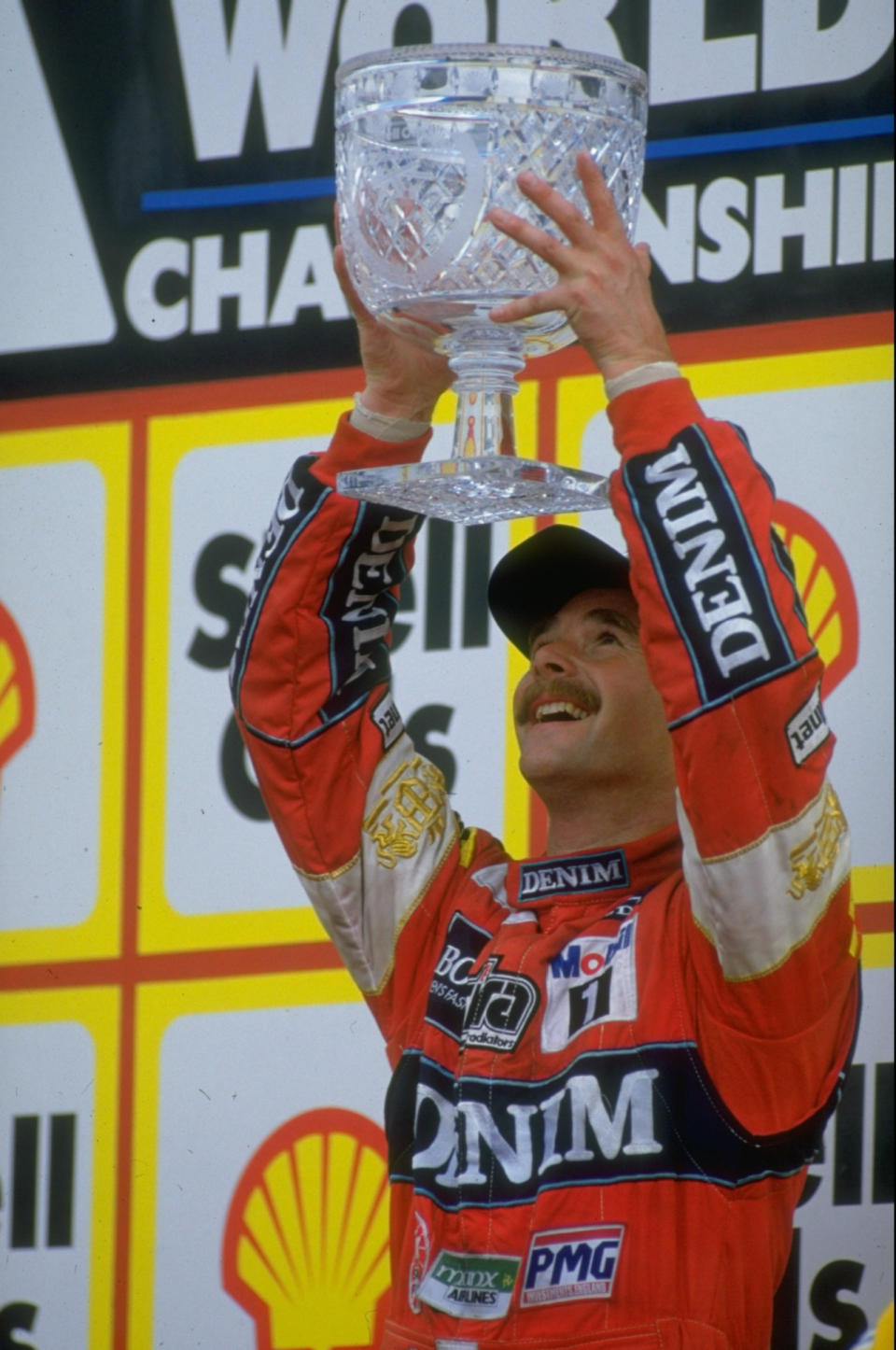
The most famous moustache in F1 belonged to Nigel Mansell (pictured). It was a fearsome beast of a tache, from the school of Groucho Marx or perhaps one of those ventriloquists who never got past a gottle of geer. It would certainly have whipped Graham Hill’s weedy effort in a fight.
In 1987, Mansell put in a performance at Silverstone that remains one of the great British drives, and utterly electrified the somewhat partisan crowd.
Forced to pit for new wheels, Mansell found himself almost half a minute down on the race leader, Williams team-mate and fierce rival Nelson Piquet, with 30 laps to go.
Driven on by the home crowd, which he said was worth a few tenths per lap, Mansell hunted down Piquet relentlessly.
Three laps from the end, with the crowd on its feet all around the circuit, Mansell sold Piquet the mother of all dummies heading down Hangar into Stowe. He took the lead and went on to win what may still be the most popular victory at this circuit.
I’d always suspected that, like Samson, Mansell derived superhuman powers from hair, albeit facial hair, and that 1987 victory seemed to confirm those suspicions.
He caught, passed and utterly triumphed over one of the fastest men in F1; he did it in an identical car; and he did it in front of a home crowd.
Straight into the Silverstone hall of heroes, I’d say, tache and all.
Moustache dash No.2
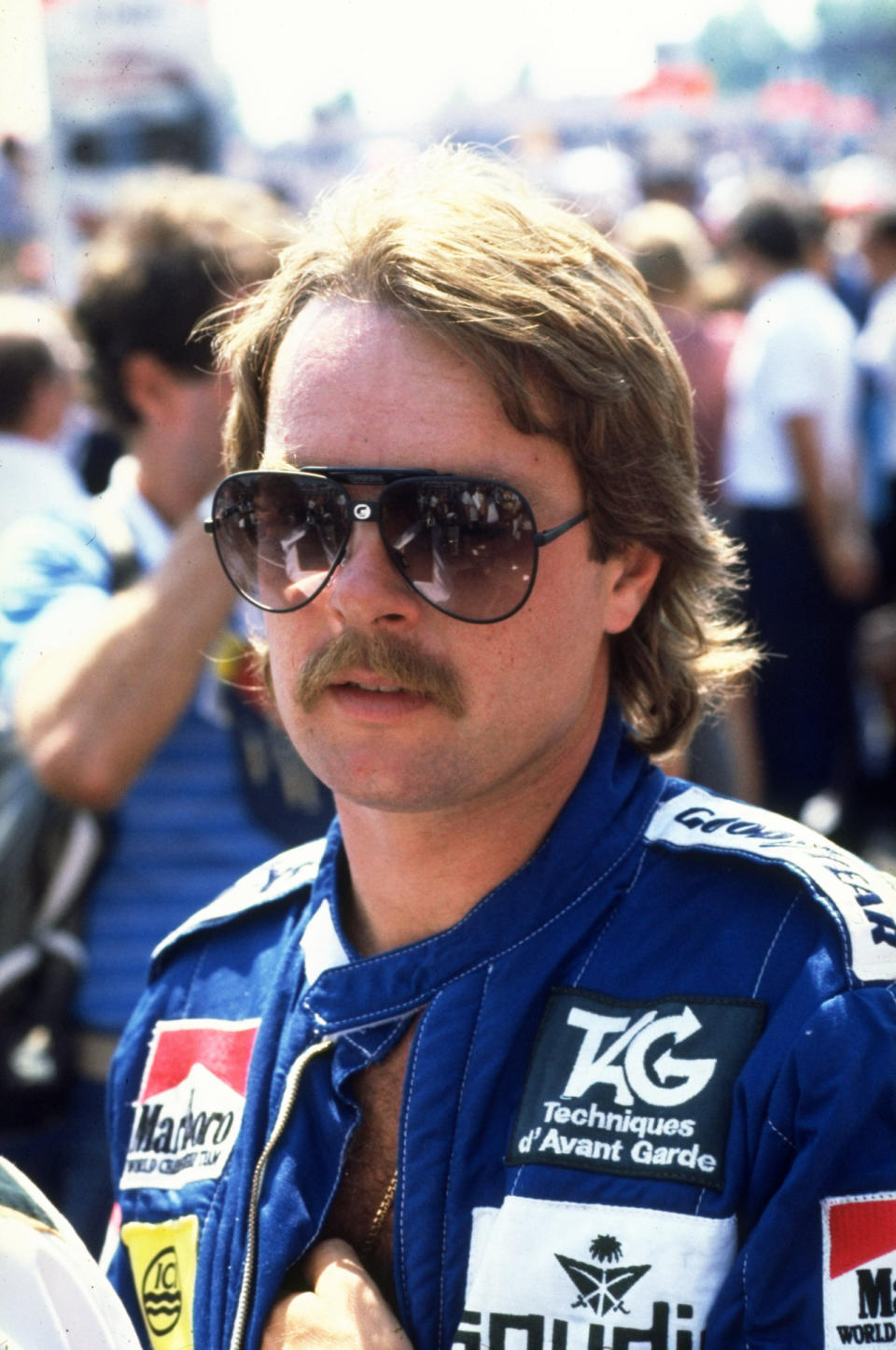
The other big name in moustaches (also aviators, medallions and hairy chests) around this time was Keke Rosberg (pictured).
To the latest generation of F1 fans, he’s that Finnish fellow with the German son, Nico.
But if you were watching F1 in the Eighties, you’re more likely to remember him as one of F1’s ballsiest competitors.
Rosberg held the F1 lap speed record for a remarkable 17 years thanks to an unbelievable qualifying session in 1985.
No one had ever managed to record an average lap speed of 160mph – back then, it was F1’s equivalent of the four-minute mile – but, on that grey Silverstone Saturday, Rosberg was poised to make history.
His Williams FW10 was powered by a 1.5litre Honda turbo engine that pumped out well over 1000bhp in qualifying set-up. To put that in context, the all-conquering 2016 Mercedes unit produces 900bhp from its 1.6litre turbo set-up.
As Rosberg began his qualifying lap, rain had started to fall but many in the crowd spotted his speed, and got to their feet.
The iconic yellow, blue and white car twitched its way around the Northamptonshire circuit and crossed the line in 1minute 5:967secs – an average speed of 160.007mph.
Rosberg had done it, and it turned out he’d done it not just with rain falling, but also with a slow puncture.
That looked to be the end of the day’s action, as the track was now damp. But more drama was to come.
The sun reappeared, Silverstone began to dry and Rosberg’s challengers were back out on track, although no one expected Rosberg’s time to be beaten.
But Rosberg wanted to play, despite being half a second faster than the rest of the field.
He would later concede it was plain silly to go back out, that risking another high-speed lap showed a lack of self-control.
But he did go back out. With sparks spraying from his Williams, he clocked 1min 5.591secs, for an average speed of 160.924mph.
It was an unbelievable performance, and the record Rosberg set would stand until 2002, when Juan Pablo Montoya lapped Monza at an average speed of 161.448mph – fittingly, in another Williams.
Rosberg’s triumph came in a car whose power delivery was brutal by modern standards, and it came against drivers including Prost, Lauda, Senna, Mansell and Piquet.
It wasn’t just one of Silverstone’s finest laps, it was one of F1’s finest laps, and it cemented him in the sport’s hall of fame – and my Silverstone hall of heroes.
Who’s this young scamp Murray Walker then?
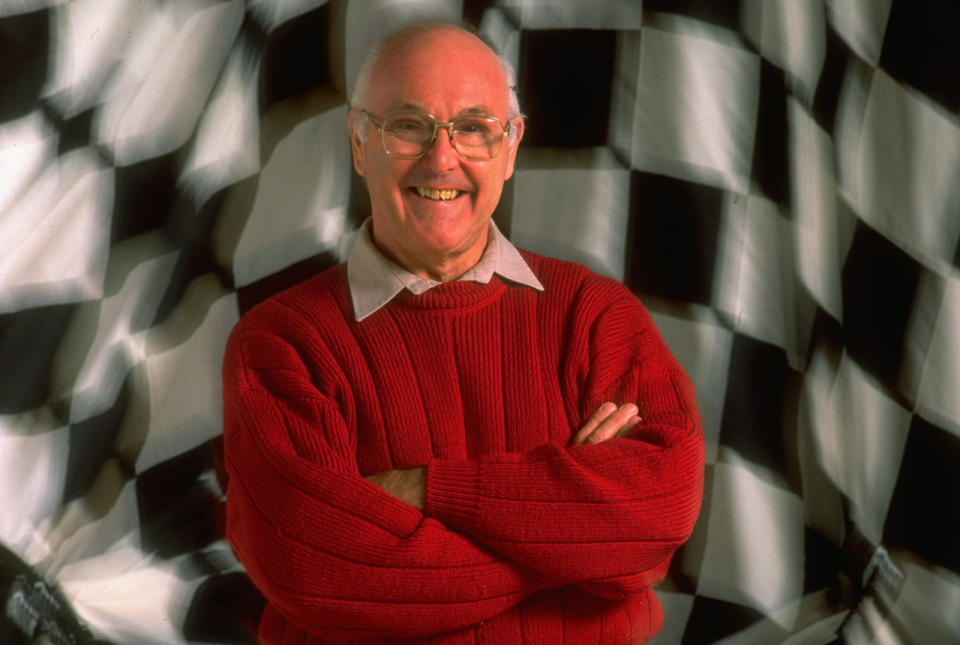
Brace yourselves, Murray fans. It’s 67 years since F1’s favourite commentator was first broadcast.
In 1949, the year before Formula 1’s birth, Walker had already done some announcing at racing events, and he wanted to follow in his father’s footsteps as a commentator.
The BBC approached him and his dulcet tones first hit the airwaves at the 1949 Silverstone British Grand Prix.
Walker was at Stowe Corner, mic in hand, when the ERA of one John Bolster came a cropper.
Walker said: ‘He was driving towards me at around 140mph when something went wrong. He went cartwheeling down the road, flew out of the car and quite literally landed at my feet.
‘This fellow was wearing a red tartan shirt – I thought it was soaked with blood and he’d been killed.
‘I thought, God, I wasn’t told what to say about this.’
In later years, Walker would not be famous for understatement but, on this occasion, he pulled himself together, looked at the crumpled driver and said: ‘John Bolster’s gone off.’
Whether he meant ‘Gone off to meet his maker’ or not, Bolster, in fact, survived the crash.
As for Walker, well, his knowledge, enthusiasm, warmth and unique way with words mean he is a shoe-in for the Silverstone hall of heroes.
Come on man, are you allergic to Silverstone?
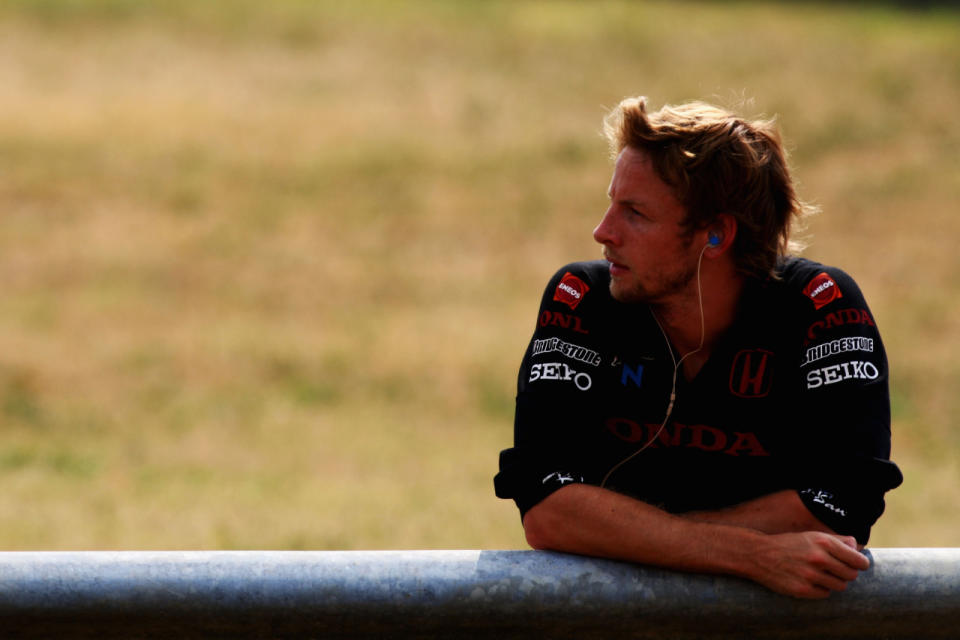
Silverstone has seen many magical moments, and victories such as Lewis Hamilton’s 2008 masterclass (pictured, top) in car control always send the British crowd home happy.
But one unfortunate fellow makes it into my hall of fame for his baffling consistency at his home grand prix.
Step forward Jenson Button, former World Champion, elder statesman of the grid and all-round good guy.
He’s never won at Silverstone. Fair enough, fellow Brits who failed to win a British Grand Prix include Graham Hill, John Surtees, Mike Hawthorn … it’s not exactly bad company for Button to be keeping.
But those other drivers at least managed to finish second.
Button (pictured) has never even managed third. The Silverstone podium is a foreign country to him and he always seems to leave his passport at home.
He’s finished fourth three times, but that feels like rubbing salt in his wounds.
British F1 fans no longer feel a crushing sense of disappointment when Button struggles at Silverstone, but the déjà vu can be utterly overwhelming.
Because he’s a former World Champion, because he’s had 50 podium finishes in his career, and because he’s done all of that without ever spraying champagne at his home grand prix, Button goes into my Silverstone hall of heroes.
Papa’s Got A Brand New Pig Farm: James Brown and the first Silverstone race
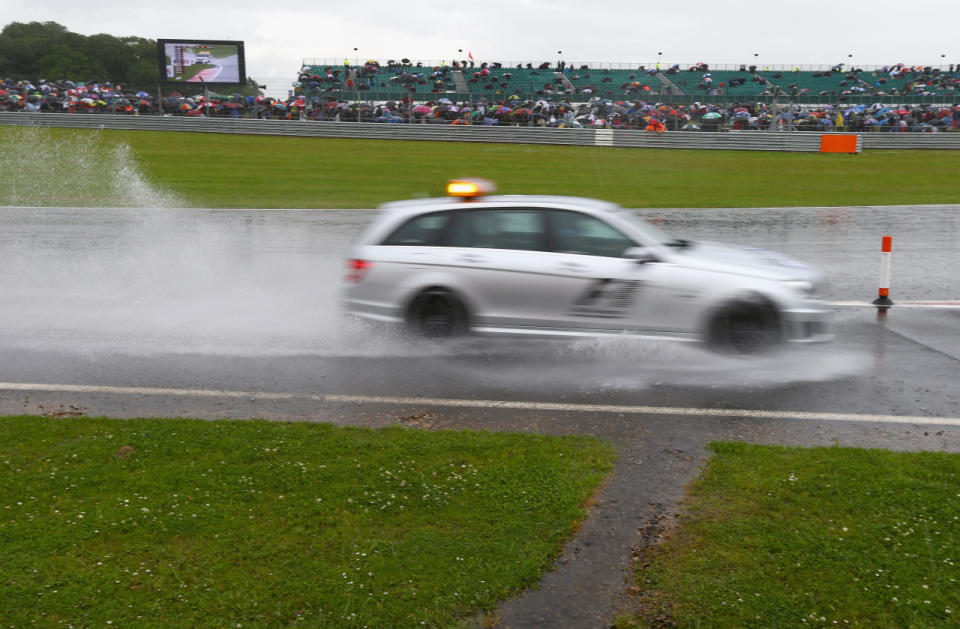
F1 is glitzy, obsessed with money and celebrity, and some of those who run it are no better than pimps, albeit incredibly wealthy pimps.
It was, of course, not always thus. There was a time before safety cars (pictured), huge run-off areas and, indeed, before racing.
In 1948, the RAC got permission to use Silverstone to host an ambitious race, the inaugural RAC International Grand Prix – even though it wasn’t in the RAC’s brief to run motor races.
They gave themselves just three months to set the event up, despite Silverstone itself being a dilapidated mess of weeds and rotten buildings.
With only ten weeks to go, a 27-year-old Scot called James Brown was appointed as track manager at the disused Northamptonshire airfield.
Brown had worked in the concrete industry, and was now employed by a bloodstock auctioneer; he’d spent much of the war at Biggin Hill and so at least he was familiar with airfields, but that was about the size of his experience.
Over the following weeks, Brown and his wife, Kay, mustered all the help they could and, gradually, a racetrack took shape.
Weeds were cleared, ramshackle buildings spruced up with a lick of paint, rope ‘barriers’ were put in place to keep the crowds off the track and away from a piggery in the middle of the circuit.
Where cars neared each other while racing in opposite directions, canvas barriers were erected to minimise the distraction, if not the risk, for drivers.
And, in October 1948, around 100,000 people descended on Silverstone to watch as Luigi Villoresi beat a field of 22 others in his Maserati.
Of course, there is much more to the story of Silverstone’s early days but, for his role in creating the home of British motorsport, James Brown gets a special place in my hall of heroes.
If you can think of anyone more deserving of a place, let me know. But they’d better be good.

 Yahoo Sport
Yahoo Sport 




































